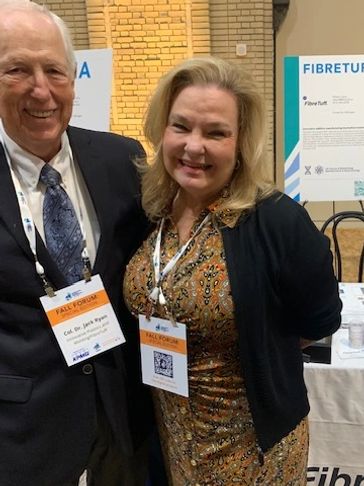About FibreTuff

Our History
Our Services
Our History
Innovative Plastics and Molding, Inc. began as a small business specializing in molding, extrusion, and 3D printing biocompatible materials. The company evolved into a prominent 3D printing solution provider of biocompatible, cellular structure's with amphiphilic 'bone-like' parts.

Team
Our Services
Our History
Our team is comprised of experts in medical compounding, biocompatible material applications, 3D printing and medical devices and implants. We have 100+ years committed to providing our clients with the best possible solutions and service.

Our Services
Our Services
Our Services
We offer a wide range of 3D printing services, including rapid prototyping, custom part production, and product design, utilizing 3D printing biocompatible materials. Our advanced FibreTuff Technology enables us to deliver high-quality results, such as the printed clavicle above.
3D Printed FibreTuff PAPC, Amphiphilic + Cellulose Fibre
FibreTuff Technology Invited to Participate at Detroit Development Partnership (DDP) International Event:
Robert Joyce of FibreTuff: Panelist at Re:Making Michigan Expo focused on Accelerating Technology Adoption 2025
Innovative Plastics and Molding, Inc. started as a small business focused on molding, extrusion, and 3D printing biocompatible materials. Over time, the company has become a leading provider of 3D printing solutions, specializing in biocompatible 3D printer cellular structures with amphiphilic 'bone-like' parts.
Robert Joyce of FibreTuff: Panelist at Re:Making Michigan Expo focused on Accelerating Technology Adoption 2025
Robert Joyce of FibreTuff: Panelist at Re:Making Michigan Expo focused on Accelerating Technology Adoption 2025
Our team is comprised of experts in medical compounding, applications of biocompatible materials, and 3D printing techniques, including the use of biocompatible 3D printer filament. With over 100 years of combined experience, we are dedicated to providing our clients with the best possible solutions and service, utilizing advanced fibre material and tuff material for optimal results.
Robert Joyce of FibreTuff: Panelist at Foam Expo North America 2025
We provide an extensive array of 3D printing services, including rapid prototyping, custom part production, and product design, all while utilizing 3D printing biocompatible materials. Our advanced FibreTuff Technology, which incorporates biocompatible 3D printer filament, allows us to achieve high-quality results, such as the printed cla
We provide an extensive array of 3D printing services, including rapid prototyping, custom part production, and product design, all while utilizing 3D printing biocompatible materials. Our advanced FibreTuff Technology, which incorporates biocompatible 3D printer filament, allows us to achieve high-quality results, such as the printed clavicle featured above, made from our innovative tuff material.
Rapid+TCT 2025 Presentation in Detroit, Mi
Robert Joyce presented at the 3D printing conference Rapid+TCT 2025 in Detroit, MI, where he discussed advancements in 3D printing biocompatible materials. His presentation, which highlighted the potential of biocompatible 3D printer filament made from innovative fibre materials and tuff material, was well received and attended by experts
Robert Joyce presented at the 3D printing conference Rapid+TCT 2025 in Detroit, MI, where he discussed advancements in 3D printing biocompatible materials. His presentation, which highlighted the potential of biocompatible 3D printer filament made from innovative fibre materials and tuff material, was well received and attended by experts and bioengineering students. He looks forward to sharing more insights at next year's event.
Fall 2024 Presentations - 3D printing FibreTuff PAPC for Additive Manufacturing
Robert Joyce will present at three conferences during the fall of 2024. He will be attending the SPE FOAMS 2024 conference in King of Prussia from September 17-20, the Advanced Manufacturing Minneapolis 2024 on October 16-17, and the AMI Performance Polyamides in Cleveland in November. During these events, he will share insights from his
Robert Joyce will present at three conferences during the fall of 2024. He will be attending the SPE FOAMS 2024 conference in King of Prussia from September 17-20, the Advanced Manufacturing Minneapolis 2024 on October 16-17, and the AMI Performance Polyamides in Cleveland in November. During these events, he will share insights from his 20+ years of experience in developing innovative foaming technology, including advancements in 3D printing biocompatible materials. His work has led to the creation of FibreTuff PAPC+Nylon66, a biocompatible material that is amphiphilic and exhibits bone-like performance.
Military Medicine 2023: Additive Manufacturing for Fabrication of Point-of-Care Therapies in Austere Environments
The Military Medicine publication highlights the use of 3D printing biocompatible materials, particularly the FibreTuff PAPC, a biocompatible 3D printer filament This innovative material has facilitated the production of various 3D printed medical supplies, including human tissues and bioactive bandages, making it suitable for prolonged field care scenarios.
FibreTuff Blog: 3D Printing Solutions and Products
We are communicating new ideas to customers who need 3D printing biocompatible materials that exhibit bone-like performance and qualities.
3D Printed Femur Bone Evaluation by Orthopedic Surgeon
An orthopedic surgeon and University Department Leader evaluates a femur bone made with FibreTuff PAPC, a notable example of 3D printing biocompatible materials. He drills into the bone models and comments on the robust properties.
Bioprinting Collagen on 3D Printed PAPC Bone Scaffold
An orthopedic surgeon and University Department Leader evaluates a femur bone made with FibreTuff PAPC, a notable example of 3D printing biocompatible materials. He drills into the bone models and comments on the robust properties.
Talking Additive Podcast with Robert Joyce
Innovative Plastics and Molding, Inc. started as a small business focused on molding, extrusion, and 3D printing biocompatible materials. Over time, the company has become a leading provider of 3D printing solutions, specializing in biocompatible 3D printer cellular structures with amphiphilic 'bone-like' parts.
Contact Us
Hours
Mon | 09:00 am – 05:00 pm | |
Tue | 09:00 am – 05:00 pm | |
Wed | 09:00 am – 05:00 pm | |
Thu | 09:00 am – 05:00 pm | |
Fri | 09:00 am – 05:00 pm | |
Sat | Closed | |
Sun | Closed |
Cookie Policy
This website uses cookies. By continuing to use this site you accept our use of cookies.



